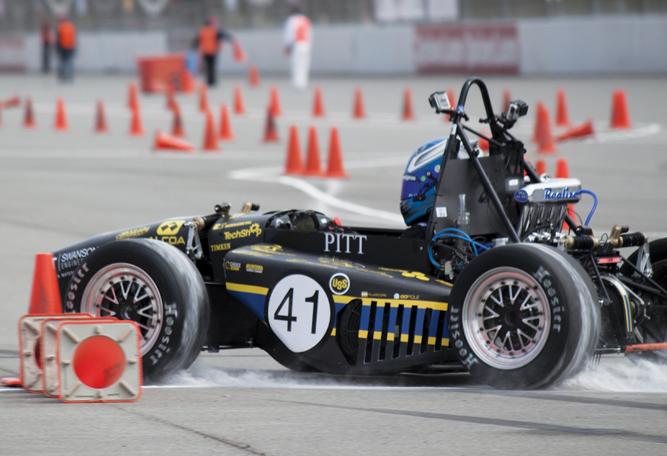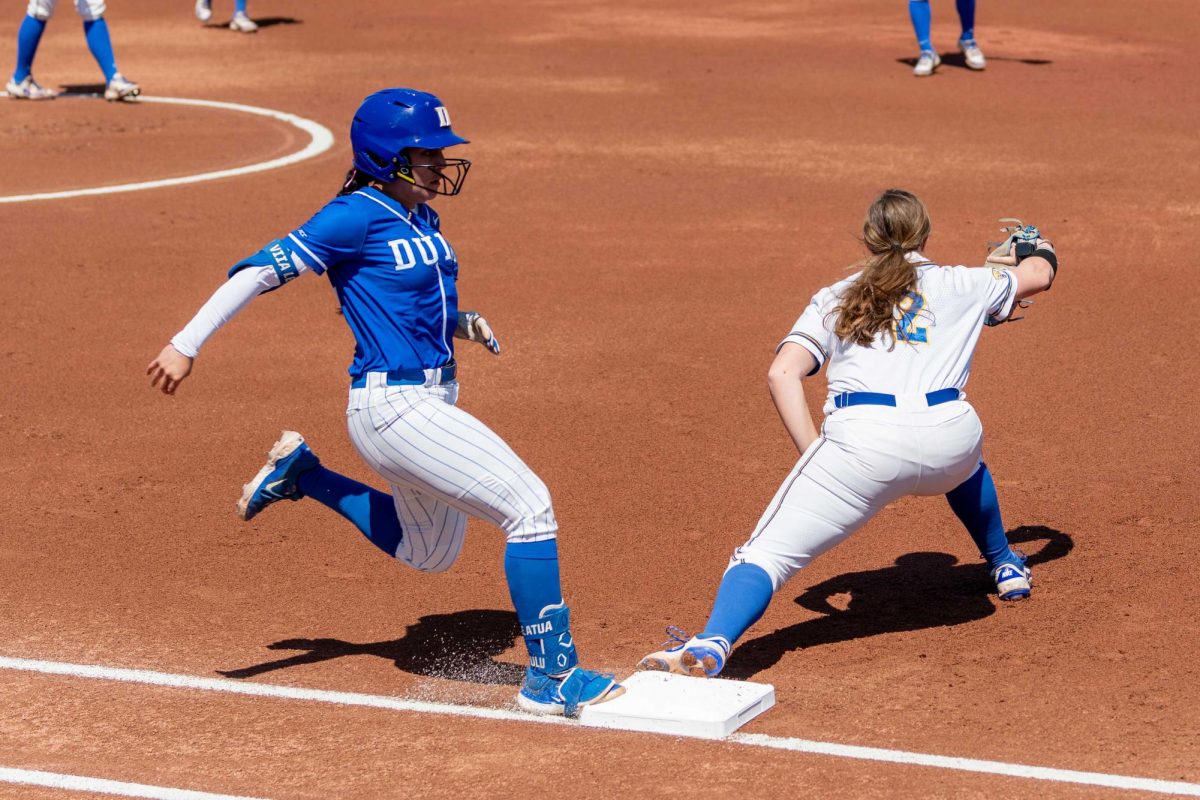Faster than a Ferrari: student-built car gears up for last race
May 20, 2014
In three seconds, Jonathan Powers accelerated from zero to 50 mph.
“It’s like a rocketship,” Powers said of the car’s takeoff.
Powers, a junior mechanical engineering major, is a driver for the Panther Racing Club, otherwise known as Formula SAE (Society of Automotive Engineers). Every year since 1990, the club has designed, built and raced small formula-style cars, and this year, Powers is one of the club’s 42 members.
Tom DuPree, outgoing FSAE president and 2014 graduate with a degree in mechanical engineering, said Formula SAE experience provides students with a diversified skill set, and is a major asset to a student’s resumé, especially for an engineering major. DuPree compared Formula SAE to a small business because of all the work that goes into the planning and development of the car.
“Pitt’s Formula SAE program is one of the best hands-on experiences available at the University,” DuPree said.
This year’s car races at speeds of around 50 mph, accelerating in about three seconds, according to business manager Ezekial Braun.
An online database of sportscar accelerations reports the zero to 60 mph acceleration time of a 2012 Ferrari FF as 3.4 seconds.
Braun graduated with a mechanical engineering degree this spring, but will stick around as business manager until the season ends after their final race on May 25. Braun, too, compared the club to a small company because of duties like soliciting sponsors and producing business reports for competitions.
The off season, which runs from late May to late August, is key for the next season’s preparation.
“We will begin work [on next year’s car] as soon as we get back from competition,” he said.
The competition, Formula SAE Michigan, took place from May 15 through May 17. Clubs from 120 different colleges worldwide attended the competition. Although FSAE competes in other competitions, Formula SAE Michigan is the largest event of its kind in the United States according to the national website for the society of automotive engineers.
Clubs at the competition become fictional manufacturing companies commissioned to create small Formula-style race cars, according to the club’s website. In the past, Pitt has placed in the top 50 finish times each of the past eight years, including placing 22nd in 2009.
According to Braun, “mechanical failures” damaged the club’s competitive chances in Michigan this year. The club fell to 72nd over the weekend. With post-competition adjustments, he said the club hopes to place well at next week’s Formula North competition.
Clubs from all over the United States and Canada will compete in Formula North in Ontario from May 22 to May 25. Throughout the competition, “a jury of experts from the motorsport, automotive and supplier industries judge the design cost and business planning of all the clubs,” according to Formula North’s website.
Chriselle D’Souza, a Formula North spokesman, described the competition as “an opportunity for passionate students to showcase their text-book learned skills and apply it to real world experiences.” Panther Racing placed 9th at the Ontario competition last year according to the Pitt FSAE website.
While engineering majors dominate Pitt FSAE, Braun said the club is open to all Pitt students and includes members majoring in everything from photography to psychology.
The club’s influence has recruited new members at Pitt such as Michelle Banas, who joined this year. Banas, a freshman electrical engineering major, said she heard about Panther Racing through friends and the fall activities fair.
“I really enjoyed this year and learned a lot,” Banas said. “I’m looking forward to sticking with the club through my college years and learning even more.”
Dupree said that he has high aspirations for the club’s future without him.
“FSAE at Pitt is a growing entity that will continue to increase in size and influence and hopes to one day be known to every student and faculty member at Pitt,” DuPree said.



